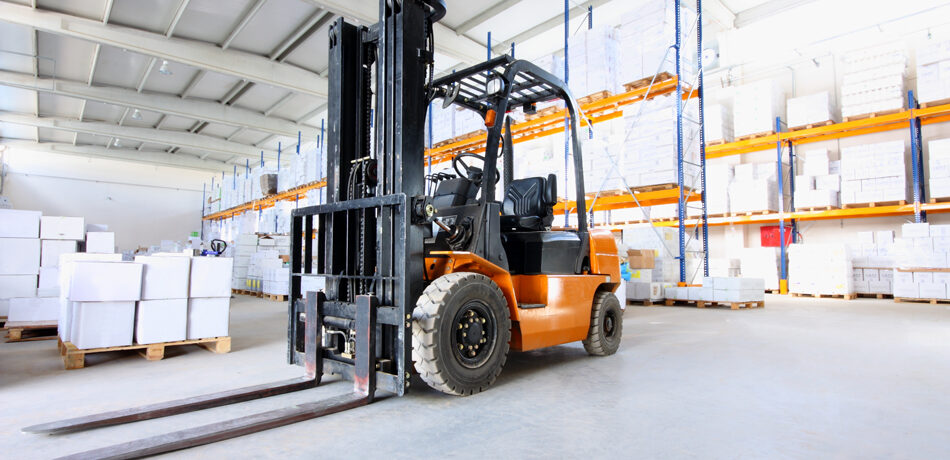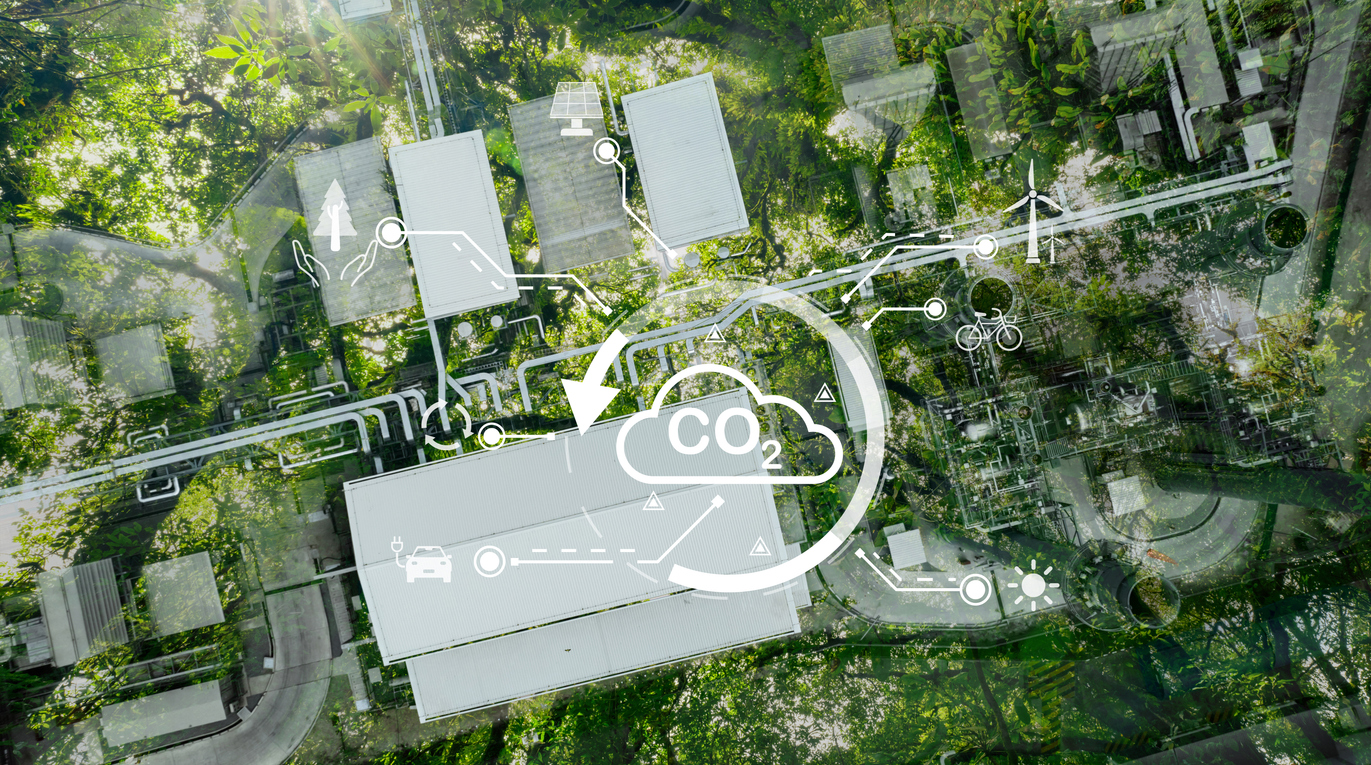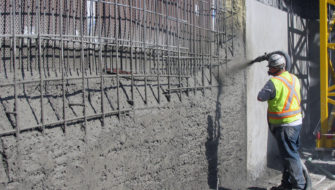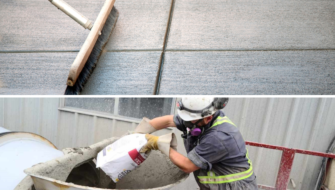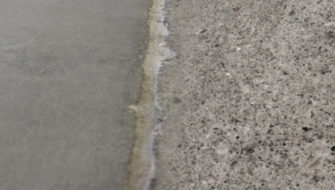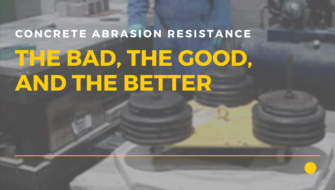In high-wear environments such as industrial floors, transportation hubs, distribution centers, and manufacturing facilities, concrete durability is critical. Continuous exposure to heavy traffic, machinery, and environmental factors can compromise the integrity of concrete surfaces, leading to costly repairs and operational downtime.
Choosing concrete admixtures specifically designed for abrasion and erosion resistance is essential to ensuring long-term performance, reducing maintenance, and aligning with sustainability goals.
This article outlines the steps for effectively specifying concrete for high-wear applications, drawing from industry best practices and innovative solutions like Hard-Cem.
| Enjoying this article? Watch our webinar, How to Write Specs for Abrasion Resistant Concrete Admixtures. |
Understanding Abrasion and Erosion in Concrete
In concrete surfaces subjected to high traffic or abrasive environments, typical damage mechanisms include:
- Sliding Abrasion: Caused by objects moving across the surface, such as pallets or machinery, which scrape against the concrete.
- Rolling Abrasion: Resulting from repeated pressure by heavy rolling loads, like forklifts.
- Foreign Particle Abrasion: Particles like sand or gravel grind into the surface under traffic.
- Erosive Wear: Flowing water, especially with suspended solids, abrades and erodes surfaces over time.
These forces can significantly reduce concrete’s service life and lead to high maintenance costs, downtime, and operational inefficiencies. Thus, selecting the appropriate abrasion and erosion resistance admixture—sometimes called a hardening admixture or integral hardener—is crucial for both functionality and sustainability.
Methods for Ensuring Concrete Durability in Abrasive and Erosive Environments
Historically, methods for improving concrete abrasion and erosion resistance include liquid densifiers, dry-shake hardeners, and high-strength concrete. However, these methods come with limitations.
Liquid Densifiers
While economical, densifiers have shown limited success in substantially reducing wear. These silicate-based sealers chemically react with calcium hydroxide in the concrete to form additional binding material but may not provide sufficient abrasion resistance in demanding applications.
Dry-Shake Hardeners
Applied as a dry powder on fresh concrete, these hardeners contain mineral or metallic aggregates that require skillful application. However, they pose health risks due to silica dust and often complicate installation. Delamination and floor flatness (FF/FL) issues are common when using dry-shake hardeners , which is particularly troublesome on floors where sensitive heavy machinery is operated such as distribution centers or manufacturing floors. Uneven floors can cause damage to this machinery and lead to costly downtime and repairs.
Higher-Strength Concrete
Increasing concrete strength can enhance abrasion resistance, but it comes at the cost of higher cement content and potential shrinkage and cracking. Additionally, higher cement use raises the carbon footprint of the project.
Abrasion and Erosion Resistance Admixtures
Integral abrasion and erosion resistance admixtures, like Hard-Cem by Kryton, represent a breakthrough in abrasion and erosion resistance technology. Testing using the ASTM C627 Robinson Floor Test shows that integral hardeners can double the abrasion resistance of standard concrete. Plus, unlike surface-applied methods, integral hardeners mix directly into the concrete at the batching stage, ensuring uniform distribution of wear resistance throughout the slab. These admixtures are easy to install and suitable for cast-in-place, precast, and shotcrete, as well as horizontal, sloped, or vertical surfaces.
Sustainability Benefits of Abrasion and Erosion Resistance Admixtures
Integral abrasion and erosion resistance admixtures do more than just strengthen concrete—they support sustainability goals by extending the life of concrete structures, thus lowering embodied carbon and reducing the need for frequent repairs or replacements.
Additionally, integral hardeners enable the use of lower cement content without sacrificing durability. This reduction in cement, a major source of carbon emissions, makes integral hardeners like Hard-Cem a forward-thinking choice that aligns with the industry’s move toward low-carbon, sustainable construction practices.
Specifying Abrasion and Erosion Resistance Admixtures in Concrete Mix Design
To specify abrasion and erosion resistance admixtures effectively, follow these steps:
1. Clearly Define the Performance Requirements
Define desired outcomes, such as compressive strength, abrasion resistance, freeze-thaw durability, and water permeability. Performance-based specifications allow for flexibility in material choice, which can enhance cost-efficiency and adaptability.
NOTE: Higher compressive strengths paired with integral hardeners yield superior abrasion resistance. For example, Hard-Cem can enhance the wear resistance of 25 MPa concrete by up to six times when used with higher-strength concrete.
The, determine the wear resistance level based on the anticipated traffic, load intensity, and environmental conditions. For example, industrial floors may need maximum abrasion resistance, while areas exposed to flowing water may need erosion resistance.
2. Include Test Standards
Define quality control steps, including on-site sampling and testing procedures. For example, specify the frequency of slump tests, temperature checks, and strength sampling.
Reference specific test methods (e.g., ASTM C627 for abrasion resistance (also known as the Robinson floor test), ASTM C1202 for chloride permeability) to ensure everyone is aligned on acceptable quality and performance levels.
3. Align with Ready-Mix Suppliers
Ensure the ready-mix supplier is informed about abrasion and erosion resistance admixtures requirements. Integral solutions like Hard-Cem are compatible with standard concrete and do not alter mix handling properties. The admixture should be noted under both the concrete and floor finish sections to communicate requirements clearly to all stakeholders.
4. Verify Compatibility with Other Materials
Specify any limitations for using certain admixtures together, especially if there is a risk of reduced performance.
Abrasion and erosion resistance admixtures are compatible with most cements, supplementary cementitious materials, and standard admixtures. Unlike surface-applied hardeners, they can also be used in air-entrained concrete, making them ideal for exterior applications exposed to freeze-thaw cycles.
5. Include Sustainability Goals and Carbon Reduction Measures
When sustainability is a priority, specify allowable ranges for cement content and encourage the use of low-carbon alternatives, such as slag or fly ash.
Specify durability criteria that extend the concrete’s life, reducing the need for replacements. Performance-based specifications help extend longevity, which aligns with sustainability goals by minimizing resource use and carbon emissions.
NOTE: Hard-Cem contributes to the requirement for up to seven categories of LEED points as well as numerous Envision and STARS credits.
Case Studies: Real-World Applications of Integral Hardeners
Several high-wear applications highlight the effectiveness of abrasion and erosion resistance admixtures including:
Roquette Pea Protein Plant (Manitoba, Canada)
After initial issues with dry shakes, Roquette switched to an integral hardener to improve durability in a highly abrasive environment. This adjustment helped them stay on track amid challenging weather conditions and large slab requirements. Read the full case study.
CorLiving Warehouse (British Columbia, Canada)
In this facility, sections treated with Hard-Cem retained their original finish after 14 years, while untreated areas showed noticeable wear. This durability highlights the extended service life that integral hardeners offer. Read the full case study.
New Afton Mine (British Columbia, Canada)
Facing rapid wear in its ore collection and truck-turning areas, the New Afton Mine used an integral hardener to reduce maintenance cycles and achieve substantial carbon savings by avoiding frequent replacements. Read the full case study.
The Future of High-Wear Concrete
Specifying concrete for high-wear applications requires a balance between durability, ease of installation, and environmental impact.
Integral abrasion and erosion resistance admixtures, such as Hard-Cem, provide a modern, effective solution for abrasion and erosion resistance without the drawbacks of traditional methods. By embedding wear resistance within the concrete matrix, these admixtures offer reliable, long-term performance in even the most demanding environments, supporting both durability and sustainability in construction.
To learn more about specifying abrasion and erosion- resistant concrete solutions, watch our webinar, How to Write Specs for Abrasion Resistant Concrete Admixtures, or visit Kryton.com.
For more information, contact our team.

